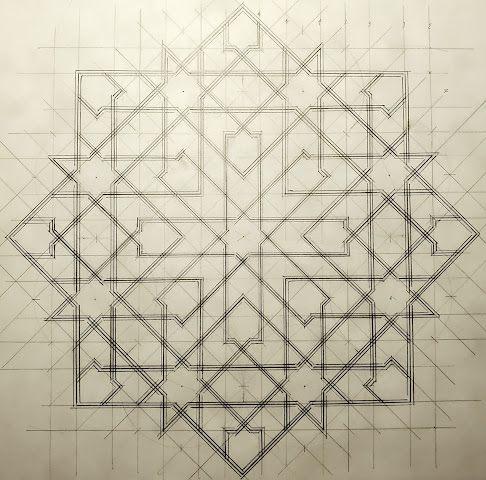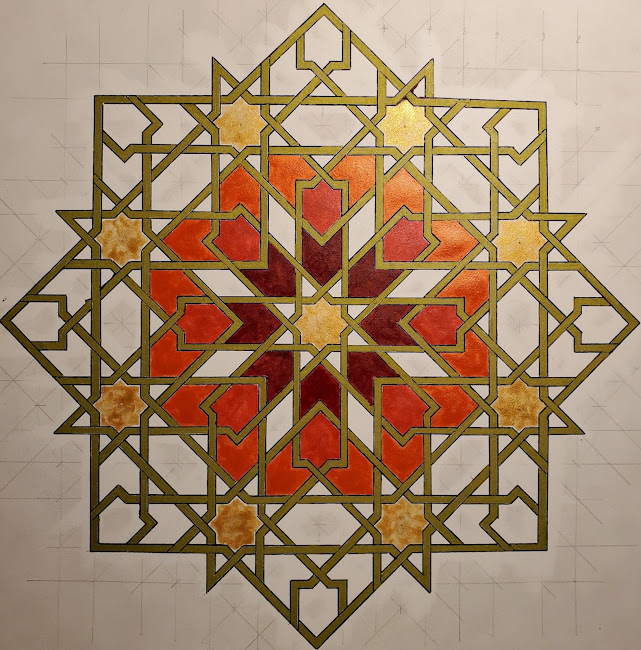Adv S5 HW: Al-Ankaboutiya (The Spiderweb)
Part A: Draw the circles
1. define the center of the page, and from there, draw the center circle. It’s circumference, on a 12”x18” page, will be about 7.75” (7 3/4”), so set the compass to 3.875” (3 7/8”). Set the compass aside to use again in step 4.
Note: If you wish to tesselate the design, take the original compass radius, and from the centers of the 2 smaller circles above and below 9:00, define the center of the next circle by finding the intersection of two slash marks. Place the compass point at the intersection and draw another circle. This will cross through the centers of the two smaller circles. Repeat from the 6:00, 3:00 and 12:00 circles.
Part B: Divide the small circles in eighths and draw the grid
1. Hold the ruler on vertical axis so that its edge touches the centers of the two adjacent circles at 3:00, then make a mark on the circles where the ruler crossing the edge (3 marks). Repeat with each pair of circles (if the circles are adjacent there will be 3 marks, and if the circles are separated, there will be 4 marks).
2. Turn the paper 45 degrees and do the same thing on the \diagonal axis. Repeat again on the horizontal axis and /diagonal axis to divide all the small circles into eighths.
3. Hold the ruler vertically so that it’s edge runs along the vertical chords of the adjacent circles at 3:00, on either side of the vertical diameter, and draw a line across the page. Repeat for the next 3 pairs of circles This will result in a total of 6 vertical lines.
6. Repeat the process, turning the page 45 degrees three more times.
Note: at this point, each circle contains a solomon seal as well as a nested solomon seal with loozat.
























Comments
Post a Comment